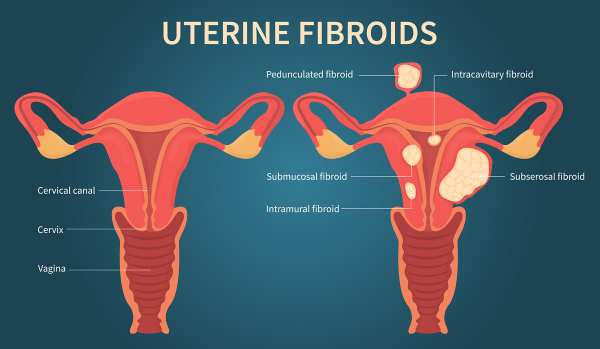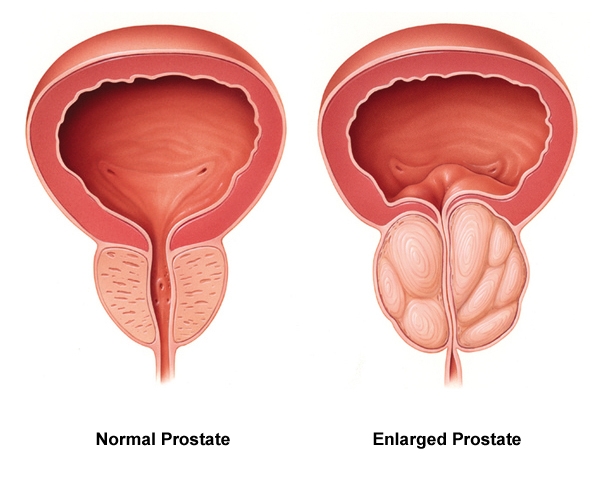Causes of Depression
Depression can arise from a multitude of factors, such as genetic, environmental, psychological, and biochemical ones.
Risk factors for depression
A person is more likely to experience depression if they have trauma, significant life changes, stress, a family history of depression, physical illnesses (like diabetes, cancer, or Parkinson’s disease), or as a side effect of certain medications.
Diagnosis of major depression disorder
A minimum of two weeks must pass with some of these symptoms and signs being presented almost daily to be diagnosed with Major Depressive Disorder:
Common symptoms of depression
The common symptoms of depression include.
- Persistent sadness,
- Hopelessness,
- Pessimism,
- Emptiness,
- Lack of energy,
- Feeling guilty or unworthy. The lack of interest or pleasure in pastimes,
- Alterations in appetite that result in either weight gain or loss,
- Slower speech, movement, or thought.
- Increased fidgeting
- Difficulty focusing, thinking coherently, or making decisions
- Suicidal thoughts, suicidal attempts, thoughts of death, or self-harming behavior
Lifestyle Practices to Alleviate Depression Symptoms
- Self-care. Practice stress-reduction techniques like tai chi or meditation. Get enough sleep, exercise, and eat a balanced diet. For the most part, adults require 7 to 9 hours of sleep. Refrain from using recreational drugs and alcohol, as these can exacerbate symptoms and complicate the treatment of depression.
- Educating family and friends about depression: They can assist you in identifying early indicators that your depression might be relapsing.
- Maintain your treatment regimen. Continue taking your medication and attending therapy sessions even after you feel better. Sudden medication discontinuation may result in withdrawal symptoms and a relapse of depression. If necessary, work with your physician to modify your medication or dosage to adhere to your treatment plan.
- Make modest, achievable goals: realistic goals to increase motivation and self-assurance. During the first stages of care, you might want to walk, have lunch with a friend, or make a bed. Gradually increase your goals as you get better.
- Identify the warning signs: Determine what triggers your depression, and if you notice any unusual changes in your feelings, thoughts, or behavior, speak with your doctor or a mental health professional. Keep a journal of your daily emotions, feelings, and reactions to identify trends and identify the things that lead to depression.
- Seek support. Maintaining relationships with people is crucial, especially during difficult times or periods, regardless of whether you receive support from family or a support group.
 Coronary Heart Disease Risk Factors: Measures for Reduction
Coronary Heart Disease Risk Factors: Measures for ReductionCoronary Heart Disease (CHD) is a chronic and intricate ailment associated with substantial morbidity and mortality, primarily attributed to atherosclerotic lesions in coronary vessels, ultimately leading to myocardial infarction (MI) and stroke. Unhealthy eating habits, often influenced by chronic inflammation, are closely linked to CHD. Various health conditions, lifestyle choices, as well as your age and family history, can elevate the risk of developing heart disease; approximately 47% of Americans have at least one of the three primary risk factors for heart disease: high blood pressure, elevated cholesterol levels, and smoking. Certain risk factors for heart disease, such as age or family history, are beyond your control. However, you can proactively reduce your risk by changing the factors you can control.
Behaviors that heighten the risk for heart disease are
- Smoking: The Food & Drug Administration (FDA) estimates that cardiovascular disease causes 800,000 deaths and 400,000 premature deaths per year. About one-fifth and one-third of these result from smoking, respectively. Additionally, research reported that smoking resulted in a 51% increased risk of coronary heart disease in patients with diabetes. Cigarette smoking has the potential to harm the heart and blood vessels, amplifying the risk for heart conditions like atherosclerosis and heart attacks. Even nonsmokers face an increased risk of heart disease when exposed to secondhand smoke.
- Excessive alcohol consumption can elevate blood pressure and elevate the risk of heart disease. It also leads to increased triglyceride levels, a fatty substance in the blood associated with an elevated risk of heart disease.
- Sedentary lifestyle: Insufficient physical activity is a precursor to heart disease and can strengthen the likelihood of other medical conditions that serve as risk factors, including obesity, high blood pressure, high cholesterol, and diabetes. Engaging in regular physical activity can effectively decrease the risk of heart disease.
- Unhealthy Eating Habits: A diet rich in saturated fats, trans fats, and cholesterol has been associated with heart disease and related conditions like atherosclerosis. Recent research has provided more explicit evidence that trans-fat significantly raises the risk of cardiovascular disease by adversely affecting lipids, endothelial function, insulin resistance, and inflammation. For each 2% increase in calories consumed from trans-fat, there is a 23% higher risk of coronary artery disease. Recent studies and systematic reviews have focused on red and processed meat consumption. The research consistently demonstrates an increased risk of coronary heart disease and cardiovascular events. The risk ranges from 15% to 29% higher with red meat consumption and 23% to 42% higher with processed meat consumption
Measures for Reducing the Risk of Coronary Heart Disease
- Educating children and adolescents about the dangers of smoking to deter the initiation of tobacco use. The Food & Drug Administration (FDA) reported that the risk of coronary artery disease decreases to the level of lifetime nonsmokers within four years of quitting and within ten years.
- The DASH, Mediterranean, and vegetarian diets have the most evidence for cardiovascular disease prevention. The DASH diet has been shown to lower systolic blood pressure by up to 11.5 mmHg in adults with hypertension. Additionally, reported findings indicate a 21% reduction in coronary artery disease risk with adopting the DASH diet.
- The American Heart Association suggests substituting saturated fat with polyunsaturated and monounsaturated fats. A 5% shift from saturated fat to polyunsaturated fat consumption is linked to a 10% lower risk of coronary artery disease.
- Engaging in about 150 minutes per week of moderate-intensity aerobic activity significantly lowers the risk of cardiovascular disease. Moderate-intensity aerobic exercise is characterized by activity that maintains a heart rate between 50 to 70 percent of the individual’s maximum heart rate, calculated as 220 beats per minute minus the person’s age.
 The Health Effects of Stress
The Health Effects of StressOverview of Stress: Stress significantly affects health, contributing to disease development and burdening healthcare systems considerably. It is a significant factor in various ongoing health issues, particularly cardiovascular diseases, which are often impaired by everyday psychosocial pressures, such as work-related stress.
The following are the roles of stress in disease development.
Gender Differences in Stress Responses: Gender plays a vital role in how individuals experience and manage stress. Research reports that women are more likely to develop mood disorders and autoimmune. At the same time, men tend to have higher rates of early substance abuse, infectious disease, mortality, and antisocial behavior. Unsuccessful stress management can lead to severe physical and mental health consequences for both individuals and communities.
Physiological Responses to Stress: The study reports that stressful events can trigger emotional responses such as anxiety and worry, impacting the hypothalamic-pituitary-adrenal (HPA) axis and the sympathetic-adrenal-medullary (SAM) system, which may lead to unhealthy lifestyle choices, comprising poor sleep, alcohol consumption, decreased physical activity and increased smoking thereby increase the risk of diseases.
Chronic Stress in Specific Environments: Chronic stress in educational settings and workplaces impacts mental and physical health noticeably. Also, it indicates that occupational stress significantly affects mental well-being.
Traumatic Events as a Stress Source: Traumatic events are a prevalent source of stress that affects a large portion of the population. The study reports that In North America, about 60% to 75% of individuals will experience a traumatic event in their lifetime, including serious accidents, exposure to war, sexual assault, chronic childhood abuse, or neglect.
 Risk Factors for Uterine Fibroids Among Black Women
Risk Factors for Uterine Fibroids Among Black WomenUterine fibroids (UFs) represent the most prevalent non-cancerous tumors among women of reproductive age. Symptomatic fibroids can lead to significant health issues and are the primary reason for hysterectomies in the United States and globally, contributing to substantial socioeconomic impacts and affecting over 70% of women of reproductive age (Langton et al., 2024). African American women tend to develop fibroids approximately 10 years earlier than White women in the US and bear a disproportionate health burden from these tumors
Black women experience UFs at higher rates, with an earlier onset, more severe symptoms, and faster disease progression compared to other groups.
According to Sithembinkosi Ndebele (2024), 85% of participants were non-Hispanic Blacks. Black participants had a higher likelihood of a UF diagnosis, and the following risk factors were reported contributing to the high prevalence of UFs in Black individuals:
- Socioeconomic Status: Lower socioeconomic status is reported to increase the rates of UFs.
- Adverse Environmental Exposures: Increased exposure to environmental pollutants is associated with a higher prevalence of UFs.
- Chronic Stress: Experiences that increase chronic stress are significant contributors.
Lifestyle and socioeconomic factors, closely tied to neighborhood characteristics, further influence UF prevalence. These factors include:
- Body Mass Index (BMI): A higher BMI correlates with a higher risk of UFs.
- Alcohol Use: Regular alcohol consumption is positively correlated with UF diagnosis.
- Income and Occupation: These factors influence access to healthy food and healthcare.
 Prevalent Barriers to obesity within the African American population.
Prevalent Barriers to obesity within the African American population.As we know, obesity stands as a significant health concern affecting the lives of African Americans. It is imperative to grasp the barriers that contribute to the rising rates of obesity within this population.
Obesity is characterized by excessive body fat accumulation influenced by environmental and genetic factors and poses various health risks, including specific cancers, type 2 diabetes, hypertension, osteoarthritis, hyperlipidemia, and cardiovascular disease. Omondi & Freysteinson (2023) estimated annual medical expenses related to obesity issues in the United States to be around $147 billion. Research reveals that obesity prevalence is notably high among African Americans, with rates around 49.6%, surpassing non-Hispanic Whites at 42.2%. Mainly, obesity rates are higher among African American women, reaching 56.9%, compared to 41.1% among African American men (Lofton et al., 2023).
Access to nutritious foods is limited for African Americans, who often consume less nutritious diets with high levels of added sugars and fried foods. Multiple obstacles hinder healthy eating habits, including limited knowledge, the cost of nutritious foods, time constraints for meal preparation, reliance on transportation to access stores, and communication barriers with healthcare providers regarding dietary habits.
Similarly, opportunities for physical activity are restricted, exacerbating the obesity issue. Reduced physical activity levels and increased sedentary behaviors like gaming or screen time have been associated with higher body mass index (BMI). African Americans facing obesity encounter various challenges in engaging in physical activity, including a lack of awareness regarding effective exercise methods, limited access to affordable exercise programs, inadequate facilities, transportation limitations, and health concerns.
References
Omondi, H., & Freysteinson, W. M. (2023). Understanding Obesity in African American Women Using Leininger’s Theory. Nursing Science Quarterly, 37(1), 71–75. https://doi.org/10.1177/08943184231207383
Lofton, H., Ard, J. D., Hunt, R. R., & Knight, M. G. (2023). Obesity among African American people in the United States: A review. Obesity, 31(2), 306–315. https://doi.org/10.1002/oby.23640
 The Health Risk Hiding In Your Light Switch and How to Prevent It
The Health Risk Hiding In Your Light Switch and How to Prevent ItLight at night (LAN) refers to the use of artificial or natural light during nighttime hours for visibility purposes.
Deprato et al. (2025) reports that approximately 80% of the global population is exposed to light-polluted skies, and LAN is now considered a major environmental pollutant. Sources include streetlights, vehicles, homes, industries, and even atmospheric reflections.
LAN disrupts the body’s circadian rhythm, the internal 24-hour clock regulated by the brain’s suprachiasmatic nucleus. When artificial light interferes with natural dark–light patterns, it delays the circadian clock and sleep-wake cycle, leading to melatonin suppression, sleep disturbances, and an increased risk of various diseases (Deprato et al., 2025). Blue-rich and bright LED lights cause the most significant disruption (Deprato et al., 2025). The study reports that LAN exposure is linked to higher rates of depression, bipolar disorder, anxiety, and other severe mental disorders, likely due to circadian misalignment, sleep deprivation, and changes in brain chemicals such as serotonin and dopamine.
Implications:
1.The findings suggest that light pollution and artificial light exposure at night are not only environmental/visual concerns but also have mental health implications.
2. Encourages rethinking nighttime habits — including screen use before bed, bedroom lighting, blackout curtains, and managing exposure to streetlights or indoor lights at night.
3.The implications of light at night may vary by culture or by groups
4. Designing homes and neighborhoods that minimize intrusive nighttime lighting in bedrooms, promoting lighting standards that consider human health
Prevention/ Mitigation strategies
1.Reduce screen time before bed: Use “night mode” or blue-light filters on devices, dim the brightness, and avoid stimulating content.
2. Improve bedroom lighting: Use blackout curtains, turn off or dim indoor lights, remove bright electronic indicators, and opt for warm, low-intensity lighting in the evening.
3. Maintain a consistent sleep–wake schedule: Even if artificial light is present, a regular circadian rhythm helps mitigate disruptions.
4. Use lighting design for sleep: In the evening, switch to warmer (red/orange) wavelengths; avoid bright overhead white/blue light late at night.
5.Monitor and adjust ambient outdoor lighting: If streetlights are intrusive, consider using blackout curtains or an eye mask; if indoor lighting spills into the night, turn off non-essential lights.
Source: https://doi.org/10.1016/j.scitotenv.2025.179188
 Male Health and Prostate Diseases
Male Health and Prostate DiseasesThe prostate is a small, walnut-sized, shaped organ below the bladder and in front of the rectum. The main functions are to create fluids for semen and force semen through the urethra during ejaculation. It is usual for the prostate to get larger as one age. Because of the location just below the bladder and in front of the rectum, also wrapping around the upper part of the urethra, the tube that carries urine from the bladder out of the body, it means abnormal prostate conditions can affect urination and sexual function. The prostate is prone to three main conditions, which are Prostatitis, an infection or inflammation of the prostate gland; Benign prostatic hyperplasia (BPH), an aging-related enlargement of the prostate gland; Prostate cancer, the growth of cancerous cells inside the prostate, which may break out of the gland and affect other parts of the body.
Prostatitis
This is the inflammation (swelling) of the prostate gland, and common causes include infection (usually bacteria), injury, or an immune system disorder. The symptoms may include the inability to urinate, Painful or difficult urination, and painful ejaculation, accompanied by fever, Blood in the urine (hematuria), and Severe discomfort or pain in the pelvic area or genitals.
The Risk factors for prostatitis include:
Previous prostatitis, Infection of the urinary or reproductive system, HIV infection or AIDS, Use of a tube inserted into the urethra to drain the bladder (urinary catheter), and Diagnostic sampling of prostate tissue (biopsy).
Laboratory tests for Prostatitis include Urinalysis, urine microscopy/culture/sensitivity, HIV, measurement of Prostatic specific antigen levels in the blood, Scan, etc.
Benign prostatic hyperplasia (BPH)
The prostate will almost certainly get larger increasing age. A small amount of prostate enlargement is present in many men over age 40 years of age. More than 90% of men over age 80 have the condition. It’s not clear why it happens, but it may be linked to the decline in the male sex hormone testosterone with aging. This enlargement is a condition called benign prostatic hyperplasia (BPH). The key word is benign. BPH has nothing to do with cancer and doesn’t increase the risk of prostate cancer. It can make urination and ejaculation difficult because as the prostate grows, it presses on the urethra. That interferes with the flow of urine and the release of ejaculate during orgasm. In less than half of all men with BPH, symptoms may include dribbling at the end of urinating, Inability to urinate (urinary retention), Incomplete emptying of the bladder, Incontinence, needing to urinate two or more times per night, Pain with urination or bloody urine (these may indicate infection). Slowed or delayed the start of the urinary stream, straining to urinate, Strong and sudden urge to urinate, and Weak urine stream.
The Link between BPH and Sexual Problems
Scientists aren’t sure why, but they agree that the worse the BPH symptoms are, the more likely an individual is to have sexual issues such as reduced sex drive, trouble keeping an erection, and less sexual satisfaction. It may have something to do with genetics or age. It’s also possible that the sleeplessness or anxiety that can come from an enlarged prostate makes sexual problems worse.
Laboratory Test for BPH.
A digital rectal exam is usually done to feel the prostate gland. Urine flow rate is monitored, Urinalysis to check for blood or infection, Urine culture to check for infection, Prostate-specific antigen (PSA) blood test to screen for prostate cancer, Cystoscopy, Blood urea nitrogen (BUN) and creatinine tests to check for reduced kidney function.
Risk Factors for BPH include;
- Age – symptoms start manifesting by age 50 to 60 in 60% of men.
- Unhealthy diet- daily consumption of a diet high in red or processed meat, saturated fats, and dairy products can increase your risk for prostate problems. Sodium (salt), Alcoholic and caffeinated beverages like coffee, tea, and soda can also increase your risk due to being diuretics that increase urine production.
- Type 2 diabetes, poorly managed Hypertension, and other heart diseases, Smoking, obesity, and a Sedentary lifestyle are common risk factors.
- Prostatitis
- Family history/genetics
- Frequent Urinary Tract infection (UTI)
Prostate Cancer
Cancer is a disease in which abnormal cells divide uncontrollably and destroy body tissue, in the case of prostate, abnormal prostate cells continue to grow until it has destroyed normal body tissues around and beyond the prostate. Prostate cancer usually develops slowly, so there may be no signs for many years. Symptoms of prostate cancer do not usually appear until the prostate is large enough to affect the tube that carries urine from the bladder out of the penis (urethra). When this happens, one may notice things like increased need to pee, straining while peeing, a feeling that the bladder has not fully emptied. Causes of prostate cancer are largely unknown. However, certain things can increase the risk of developing the condition.
Risk factors for Prostate cancer include;
- Age: The chances of developing prostate cancer increase as one gets older. Most cases develop in men aged 50 or older. Prostate cancer risk begins to rise sharply after age 55 years and peaks at age 70–74, after which it starts to decline. For reasons not yet understood, prostate cancer is more common in black men and less common in Asian men.
- Men whose fathers or brothers were affected by prostate cancer are at slightly increased risk themselves.
- Other risk factors include Obesity, Smoking (increases steroid hormone production such as DHT, and estrogen), High levels of pesticides, excessive consumption of dairy products (milk, yogurt, cheese, lactose-free milk, and fortified soy milk and yogurt), excessive red meat consumption, Saturated fat, and Sedentary lifestyle.
Beneficial Foods to Eat
A diet rich in fruits, vegetables, and healthy fats, such as the Mediterranean diet, may benefit health. Salmon, rich in healthy fats that contain omega-3 fatty acids, helps prevent and reduce inflammation within the body, and other cold-water fish, such as sardines and trout, are also rich in these fats.
Tomatoes: Tomatoes are packed with lycopene, an antioxidant that may benefit prostate gland cells. Cooking tomatoes, such as in tomato sauce or soup, helps to release the lycopene and make it more readily available to the body. Berries: Strawberries, blueberries, raspberries, and blackberries are excellent sources of antioxidants, which help to remove free radicals from the body. Free radicals are the byproducts of reactions that occur within the body and can cause damage and disease such as concern over time.
Broccoli: Broccoli and other cruciferous vegetables, including bok choy, cauliflower, Brussels sprouts, and cabbage, contain a chemical known as sulforaphane. This is thought to target cancer cells and promote a healthy prostate.
Nuts: Nuts are rich in zinc, a trace mineral. Zinc is found in high concentrations in the prostate and is thought to help balance testosterone and DHT. Besides nuts, shellfish and legumes are also high in zinc.
Citrus: Oranges, lemons, limes, and grapefruits are all high in vitamin C, which may help to protect the prostate gland.
All these are vital in addition to exercises to strengthen the pelvic floor muscles, such as brisk walking, Kegel exercise, and moderate strength training.
(Written by Ebenezer Dic-Ijiewere PhD.)



